Latest Posts

The Graphene Revolution: Part 3
Everyone’s talking about graphene right now. When was the last time a material received this much attention? Sure, other materials have peaked our interest before, but when something breaks into more mainstream news you know it’s going to be a very big deal.
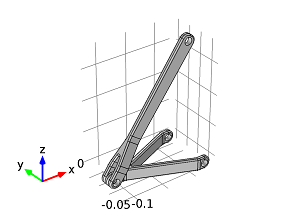
Barrel Hinge Analysis
We’ve all encountered hinges before; they are frequently used to connect different parts of mechanical assemblies in a way that allows them to move freely relative to one another, in a single degree of freedom. There are several different types of hinges, including everything from barrel hinges to friction hinges, with lots in between. Before incorporating a hinge into a mechanical assembly, you might want to get a sense of how it will hold up by performing a hinge analysis.

Discrete Fracture in Rocks
Have you ever noticed how water can flow through rocks and leave a trace of its passage by covering the surface with a patina, like white stripes? The whole process is quite complex but can roughly be explained by breaking it down into two coupled effects: gravity and chemical reactions. Gravity causes the water to infiltrate through discrete fractures (hard rocks) or pores (sedimentary rocks), until it charges the groundwater supply below to a point where excess water will surface […]
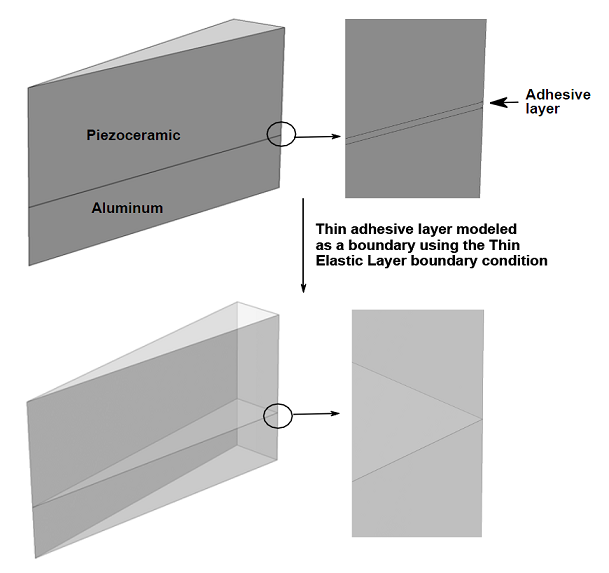
Structural Analysis with Thin Elastic Layers
Some structural applications involve thin or high aspect ratio structures sandwiched between other relatively low aspect ratio structures. For example, if a piezoelectric transducer is glued on the surface of a mechanical system, the thickness of the adhesive layer is very small in comparison to the two structures it glues together. Numerical modeling of such a thin layer in two or three dimensions requires resolving it with an appropriate finite element mesh. This can result in a large concentration of […]

Computing the Inductance of a Straight Wire
A question that comes up occasionally is whether or not you can compute the inductance of a single straight wire. This seemingly simple question actually does not really have an answer, and gives us the opportunity to talk about a very interesting point when solving Maxwell’s equations. Anybody working in the field of computational electromagnetics should have an understanding of this key concept, as it will help you properly set up and interpret models involving magnetic fields.
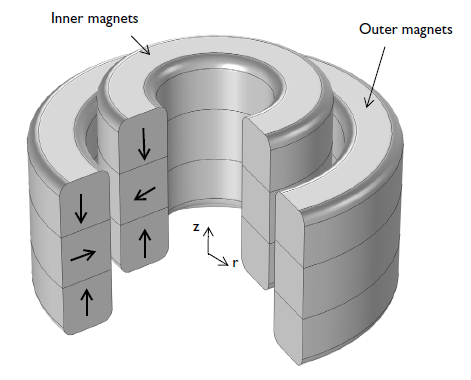
Magnetic Bearings
In the world of bearings, there are many different types to choose from. For certain applications, magnetic bearings trump their mechanical counterparts in several regards. In order to understand how the bearing will perform, using a simulation tool to calculate design parameters is a good idea.

Smart Materials Innately Transduce Energy, How Smart
Smart materials are able to convert one form of energy to another. These materials can be either solid or fluid, and are typically located within what’s called a smart structure. What makes these materials and structures so “smart”? Let’s find out.

The Graphene Revolution: Part 2
In a previous blog entry I discussed some of the exotic properties of graphene. The fact that graphene consists of a single layer of atoms means the aspect ratio of any graphene-based structure may be very high. High aspect geometries present their own array of modeling challenges.
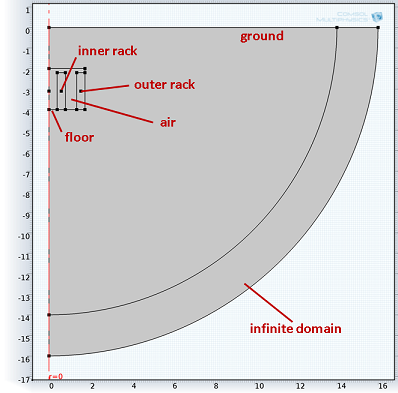
Modeling Temperature of a Wine Cellar
A lot of effort is put into inventing or improving existing technologies used to cool buildings, food, or any goods that need to be stored at a definite temperature. The reason is simple: adopting more efficient designs will result in achieving the same goal while consuming less energy. Both our balance sheet and the environment will benefit from these solutions. Here we will explore modeling temperature of a passive cooling design using a wine cellar as an example.

How to Model Multiphysics in Multimaterial?
Dr. Raj Thiagarajan is a prolific producer of interesting research articles ranging from waste-water treatment to acoustics metamaterials, and lots in between. As the Managing Director at ATOA (“Atom TO Application”) Scientific Technologies, a COMSOL Certified Consultant, Raj has had to simulate all types of applications. Now he will show you how to use multiphysics simulations in multimaterial and composite product design.
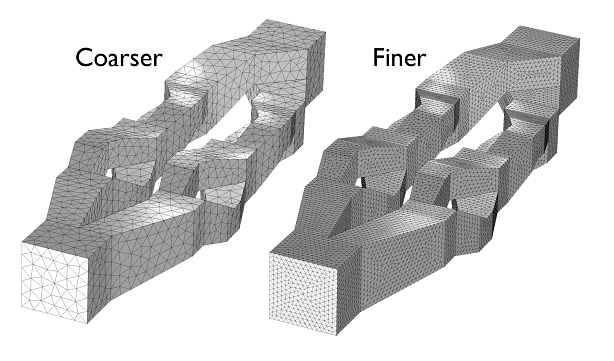
Meshing and Optimization in Engineering Magazines
Online engineering magazines, like Design World and Desktop Engineering, are great for anyone out there interested in emerging technologies. I especially liked a few recent articles: two in Design World’s “CAE Solutions” section and one in Desktop Engineering’s simulation section, detailing a couple of major topics important to finite element analysis, or FEA. First there is meshing, the foundation of FEA software. Second, there is optimization, which is all about maximizing efficiency and improving results. The key for any production […]
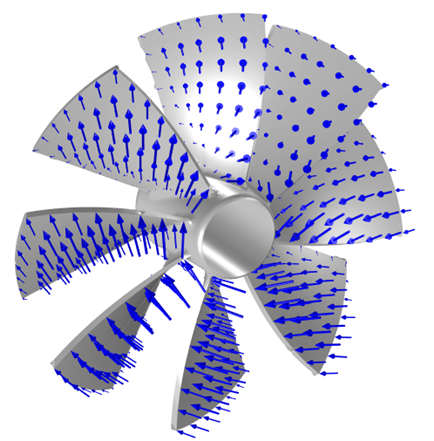
Using Point Cloud Data in Your COMSOL Model
There is sometimes a need to include data from other simulation packages into a COMSOL Multiphysics model. There are a variety of ways in which this can be done, but one of the easiest approaches is to read in the point cloud data via a spreadsheet format text file. In this blog post, we walk through the steps of reading in such data, and using it in a COMSOL model.

Probing Your Simulation Results
For a transient simulation, imagine if you could simply insert a virtual sensor in a model at a certain location and then monitor the evolution of a field value over time while solving. In COMSOL Multiphysics® you can do just that by using Probes. You define a probe in the Model Builder tree right under the Model Definitions node. Measuring the value at a point is not the only thing you can do with probes, but in this blog post we […]
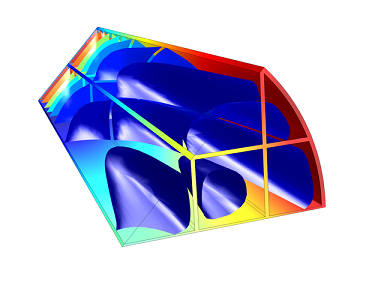
Modeling Chemical Reactions: Thermal Stress Analysis
The beauty of COMSOL is that it provides a unified modeling platform no matter what type of simulations you are performing. This is almost unique to the CAE market. Recently we showed you how to model chemical reactions using a monolith reactor as our example. First we walked you through solving the reaction kinetics and then involving plug flow, next we created a full-scale 3D model of the reactor. A chemical engineer may feel comfortable using a software optimized for […]

Optimal Distribution: Tree Roots and Microreactors
I love trees and my favorite is definitely the ficus, all varieties included. A few weeks ago I had the chance to admire a stately ficus microcarpa (see figure below). What struck me above all were its aerial roots. Roots are designed to absorb water and nutrients, sustaining the tree and synthesizing substances responsible for its growth. A thought crossed my mind right away: the shape of those roots and the way they coalesce have surely been optimized by Mother […]

The Graphene Revolution: Part 1
Graphene is a special type of material consisting of a single layer of carbon atoms arranged in a hexagonal lattice. Graphene in its stable form was discovered at the University of Manchester in 2003 (coincidentally while I was there studying for my Masters degree) and resulted in Nobel Prizes in 2010 for the two researchers who discovered it. Recently, graphene has been making the mainstream news; the European Commission has pledged €1 billion (yes, that’s billion with a b) to […]
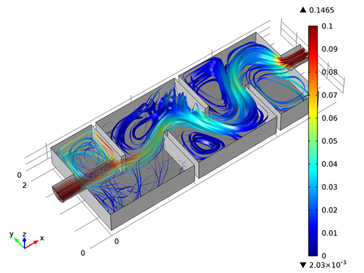
Water Purification Using Ozone
Water purification is the process by which chemicals, contaminants, and sediments are removed from dirty water to make it clean, and there are many processes through which this can be done. What you might not know, is that ozone molecules can be used as a means of disinfection in the purification process. “Ozonation” has been used to purify water, kill germs and bacteria in food, and even get rid of bad smells. Not only does ozonation provide clean water without […]

Acoustofluidic Multiphysics Problem: Microparticle Acoustophoresis
The use of acoustic waves to manipulate suspensions of particles, such as cells, has inspired the work of many researchers, paving the way for the field of ultrasound acoustofluidics. The manipulation is achieved in many ways, including using bulk acoustic waves (BAW) and surface acoustic waves (SAW), as well as acoustic radiation forces and acoustic streaming-induced drag. The latter two combine to produce the acoustophoretic motion of the suspended particles; i.e., movement by means of sound, and the methods provide […]
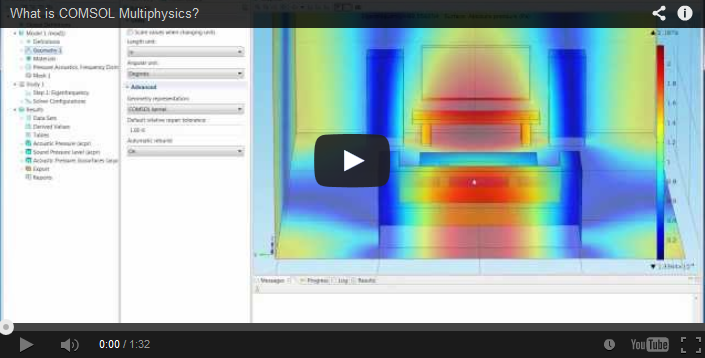
What Is COMSOL Multiphysics?
You may be wondering “What is COMSOL Multiphysics?” In short, COMSOL Multiphysics is a comprehensive simulation software environment for a wide array of applications, but structured and user-friendly for all to use. The best way to answer the question of what our software can do is to show you. This is why we have created a video that gives you a brief overview of the capabilities you can possess with the software in your hands.
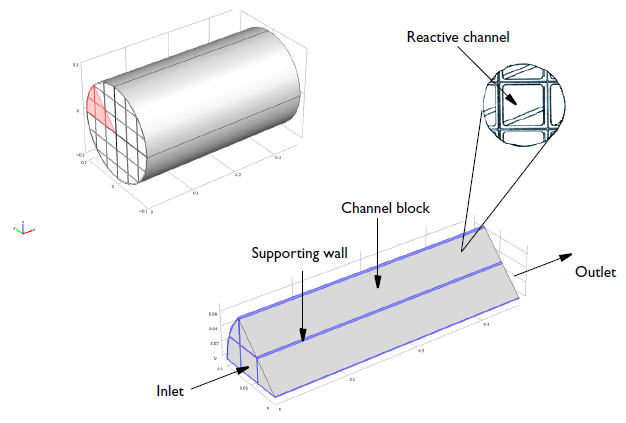
Modeling Chemical Reactions: 3D Model of a Monolith Reactor
In a previous blog post we dealt with the reaction kinetics and modeled plug flow of a monolithic reactor in the exhaust system of a car. The goal was to determine the ideal dosage of ammonia to reduce the nitrogen oxide levels emitted into the air. After understanding the chemistry of our problem, it is now time for the second part in our “Modeling Chemical Reactions” blog series. Here, we will go through the steps of generating a 3D model […]
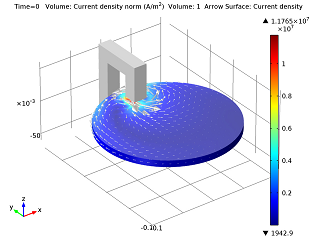
Simulating Eddy Current Brakes
Last week you saw how you can simulate the heating of a car’s brake discs. This reminded me of another type of brake — the eddy current brake (also known as magnetic brake). Whereas the other model was a study in heat transfer, eddy current brakes deal with electromagnetics.
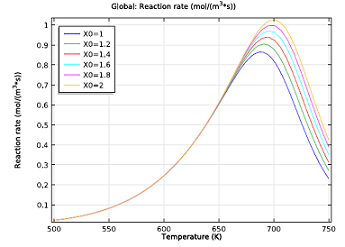
Modeling Chemical Reactions: Kinetics
In chemical reaction engineering, simulations are useful for investigating and optimizing a particular reaction process or system. Modeling chemical reactions helps engineers virtually understand the chemistry, optimal size and design of the system, and how it interacts with other physics that may come into play. This is the first of a series of blog posts on chemical reaction engineering, and here we will have a look at the initial stages of modeling the application: the chemical reaction kinetics.

Introduction to COMSOL Multiphysics, a Book to Get you Started
What does it take to get started using COMSOL Multiphysics? Of course, it depends on where you set the bar. However, grasping the workflow and handling the basic tools can be relatively easy to pick up. To make this process even smoother, first-time users will benefit from the recent major update of the COMSOL Multiphysics instruction manual. The book, Introduction to COMSOL Multiphysics, is a valuable tool for learning COMSOL simulation software and the new version is now available for […]
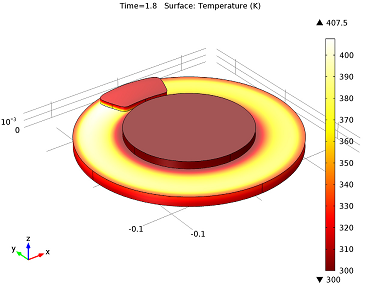
Simulating Heating of Brake Discs in a Car
Cars need brakes for obvious reasons, and you don’t want these to fail. Brake failure can be caused by many things, one of which is the overheating of the brake’s disc. As I’ve said before, no engineer wants to design a product that fails, which is also true in the case of brake-disc design. Let’s study a scenario of a car in panic brake mode, and find out how hot the brake discs and pads get as well as how […]
